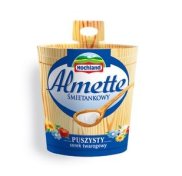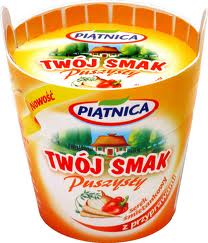In the judgment of July 5, 2012 (IV CSK 23/12) the Polish Supreme Court ruled that exclusive rights related to a protected trade mark do not cover spatial content (material) that is the inspiration for that trade mark. The right holder is therefore not entitled to prohibit exploitation of that material by any person. Exclusivity cannot apply to ideas or a source of inspiration. In this regard there is freedom of ideas, and free market competition should not be hampered. Legal protection is not conferred on ideas or their origins but on their incorporation in the form of registered and specified trade marks. By its nature packaging is the most precise information a buyer has about the product inside. This information can be conveyed in all available forms: descriptive, graphic or based on associations. A trade mark is a specific designation and intangible asset of the right holder. Its ability to distinguish goods or services is abstract in nature and separate from the product which it identifies in the context of the source of origin. Packaging corresponding to the spatial trade mark (or to which the trade mark is affixed) is merely a carrier of information about the commercial origin of the product, and does not necessarily correspond to the actual manufacturer of the goods placed in it. The trade mark deserves protection against an infringing party only if the person in question exploits it in a way that creates confusion as to the origin of goods or—in the case of a reputable trade mark—affords that person an unfair advantage or is detrimental to the reputation or distinctive character of an earlier trade mark. Any other use of a trade mark by a person who does not enjoy exclusive rights protection is allowed, while the interests of the market players need to be balanced, so that they do not abuse their market positions and free competition is ensured. The building of associations as such by an entrepreneur is not prohibited or against good moral practice unless the aim of that person is different.
Background of the case
Hochland Aktiengesellschaft based in Heimenkirch Allgäu (Germany), Hochland Reich, Summer & Co KG based in Heimenkirch (Germany) and Hochland sp. z o.o. based in Kaźmierz (Poland) (the plaintiffs) are producers of cheese and dairy products, including cream cheese packed in characteristic carton cups in the shape of a pail made from wooden planks (such pails were used in the past across rural Europe for the milking of cows). The product in question had been sold and marketed in Poland since the early 1990s. The plaintiffs had a protection right to the spatial trade mark resembling the pail (effective in Poland since 2001).[1] Furthermore, the plaintiffs had registered an industrial design for the packaging in the shape of the pail in question with the Polish Patent Office (effective since 2002).[2] The defendant (Okregowa Spółdzielnia Mleczarska w Piatnicy), is a larger Polish dairy co-operative society producing cheese and other dairy products of a similar type to the one produced and sold by the plaintiffs. In 2007 the defendant started selling its cream cheese in packages (carton cups) also resembling the pail used for milking cows, therefore—to some extent—similar to the ones used by the plaintiff. It acquired a licence for using the registered industrial design for such packaging from a party intervening in the litigation on its side (Greiner Packaging based in Teresin, Poland) and effective since 2004.[3] The packaging bore a registered spatial verbal-graphical trade mark illustrating the pail which was the trade mark to which the defendant was entitled (effective as of 2007).[4]
The contested products are shown in Figure 1.


Figure 1 The plaintiffs’ and defendants’ packaging
The plaintiffs brought a legal action against the defendant requesting among other things that the court prohibit the defendant from using packaging in the shape of a pail and using the logo depicting a wooden pail on its packaging. The reasons given by the plaintiffs were as follows: (1) they held the right to the registered industrial design in the shape of the pail, and (2) they had exclusive rights to use the spatial trade mark depicting the wooden pail in question, which was a reputable mark itself. The defendant rebutted these allegations, claiming that the packaging used for its cheese exploited a registered industrial design and spatial trade mark it was entitled to use. These industrial design and spatial trade mark, the defendant claimed, were in certain ways different from the ones used by the plaintiff, in terms of the shape, colour, composition, graphic elements and the name. The proceeding went through several instances and was quite long.[5] The authors of this article wish, therefore, rather to concentrate on the substantive (material) findings of the Supreme Court, which proceeding—as it has to be stressed here—was initiated by the defendant. One of the claims the defeated party made was that the wooden pail sign which it was supposed to refrain from using was not used as a protected trade mark. Furthermore the defendant claimed that it was ordered not to use a graphic (figurative) symbol (a sign) without a court order relating to the plaintiffs’ protected trade mark itself. That would result in an absence of cognisance of illegality of an act and constituted a violation of art.156(1) point 2 of the Polish Industrial Property Act of 2000 (IPA) in conjunction with art.296(1)(2) point 3 of the IPA. Those provisions of the IPA stipulate that an exclusive right to the registered trade mark does not entitle the right holder to prohibit the use of marks by other persons which particularly indicate the features and characteristics of the goods, their type, quantity, quality, purpose, origin and date of manufacture or expiry date. Note that according to evidence filed with the court in this case the relevant consumers chose the cheese because of its wooden pail packaging associated with—as the consumers believed—a delicious and tasty cheese inside. Bearing in mind this provision, as the defendant claimed, the Court of Appeal should not have prohibited using of a mark affixed to the packaging in question, as it was neither similar nor identical to the trade mark owned by the plaintiffs, as it was only an object (a wooden pail). That object was used by defendant on packaging in order to inform the consumers about the product’s features—the natural flavour of the cheese packaged in the pail. The Court of Appeal’s judgment —argued the defendant—lacked any legal assessment as to the similarity or identical features of the plaintiffs’ trade mark, and this was a prerequisite for infringement of exclusive trade mark rights.
Supreme Court’s reasoning
The Supreme Court overruled the judgment of the Court of Appeal and stated the legal thesis as indicated at the beginning of this commentary. First of all, the Supreme Court noted that the plaintiffs were granted the exclusive right to a trade mark bearing certain three-dimensional parameters, without any additional signs or affixed names. Therefore this trade mark did not directly refer to the wooden pail but merely constituted a spatial form which was inspired by a traditional container for milk (the object). There was no doubt, the court held, that traditional shapes are in the public domain and as such cannot constitute distinctive features of individual character required for a registered trade mark in order to give its owner an exclusive right to use it. The court firmly underlined that such exclusivity could not be granted for ideas or objects of inspiration. What is more, the Supreme Court also said that an exclusive right to a registered trade mark is not absolute in nature. In order to exercise such a right, the designation used by another person needs to be identical or similar to the protected trade mark in relation to identical or similar goods in a way that may be misleading for consumers, in particular by associating the designation with the protected trade mark. However, the risk of associations does not constitute the sole prerequisite for infringement. The risk of association specifies the prerequisite of the possibility of consumers being misled by the mark. The court referred in this regard to the jurisprudence of the Court of Justice of the European Union (CJEU): the judgments in Sabel BV v Puma AG (C-251/95)[6] and Kabushiki Kaisha v Metro-Goldwyn-Mayer Inc (C-39/97).[7]
The Supreme Court stated also that the Court of Appeal erroneously applied prerequisites provided for in the IPA for the protection of the plaintiffs’ reputable trade mark. This reputability was confirmed at an earlier stage in this case by the Supreme Court in the judgment of February 10, 2011. In the judgment commented on here, the Supreme Court noted that the Court of Appeal was obliged to assess the similarity or identical features of the litigious designations outside the scope of the trade mark’s specialisation (similarity in relation to identical or similar goods) in order to establish the risk of associations (connections) made by the relevant consumers. But despite this assessment it was also for the Court of Appeal to establish whether there were any “due causes” for the defendant to use the plaintiffs’ reputable trade mark within the meaning of art.5(3) of Directive 2008/95 to approximate the laws of the Member States relating to trade marks not properly implemented into the IPA (i.e. into art.296(2) point 3). The Supreme Court agreed to apply the EU law in this respect in the form of a civil law construct of an abuse of rights. This legal argument could result in denial of protection for a reputable trade mark bearing an object previously used in trade and accessible to any person or containing essential information for consumers about the article (here the wooden pail and the quality of the product inside it).
Commentary
The judgment commented on seems to be interesting because of the issue of a 3D trade mark, which is under the scrutiny of the Polish courts. As a general rule, spatial trade marks can be registered under Polish and EU law, just like every trade mark, provided that requirements for registration are met. However, in practice such trade marks may be a hotbed for disputes. First of all, spatial trade marks may in practice cause problems with distinctiveness, which is a condition for protection. According to well-established CJEU case law, distinctiveness is assessed, first and foremost, by reference to the goods or services which bear the mark in question and secondly by reference to the way they are perceived by the relevant public. This may, however, be a bit complicated in the case of spatial trade marks. As the CJEU held in the landmark case Mag Instrument (C-136/02 P)[8]:
The criteria for assessing the distinctive character of three-dimensional marks consisting of the shape of the product itself are no different from those applicable to other categories of trademark. Nonetheless, for the purpose of applying those criteria, the relevant public’s perception is not necessarily the same in the case of a three-dimensional mark consisting of the shape of the product itself as it is in the case of a word or figurative mark consisting of a sign which is independent from the appearance of the products it denotes. Average consumers are not in the habit of making assumptions about the origin of products on the basis of their shape or the shape of their packaging in the absence of any graphic or word element and it could therefore prove more difficult to establish distinctiveness in relation to such a three-dimensional mark than in relation to a word or figurative mark.
A trade mark must be distinctive and associated with the producer of the product, not the product as such. Nevertheless, a mark which was not at first of distinctive character may become a distinctive mark if it is used for some period of time, so it becomes commonly associated with the producer.[9] For that reason, the CJEU refused to grant protection to the mark consisting of a three-dimensional sign comprising the shape of a chocolate rabbit with a red ribbon (as a Community trade mark), produced by Lindt.[10] The court came to the conclusion that this mark was not distinctive and had not acquired distinctiveness through being used for a longer period of time, as is common for chocolate confectionery. In this context art.3(1)(e) of Directive 2008/95 on trade marks (formerly 3(1)(e) of Directive 89/104) had to be considered. This provision stipulated that marks consisting exclusively of a shape which results from the nature of the goods themselves or a shape which gives substantial value to the goods may not be protected trade marks. According to the CJEU judgment in Benetton (C-371/06), such a mark may never be a protected trade mark, even if “it acquired attractiveness as a result of its recognition as a distinctive sign following advertising campaigns presenting the specific characteristics of the product in question”.[11]
Coming back to the judgment of the Polish Supreme Court commented on here, the question that may be raised is why the court did not follow jurisprudence related to art.3(1)(e) of Directive 2008/95 but based its reasoning on a different concept, i.e. the civil law construct of an abuse of rights. The answer may be that EU law is not fully implemented into the Polish legal system. Polish law states that marks that consist only of elements which may serve in trade to indicate a particular type of product, its origin, quality, quantity, value, intended use, method of manufacture, composition, function or suitability may not be subject to protection and exclusive rights. This, however, does not seems to fully cover EU legislation setting forth that marks consisting exclusively in a shape which results from the nature of the goods themselves or the shape which gives substantial value to the goods may not be protected trade marks. Note in this respect that the plaintiffs were refused EU CTM protection for their 3D reputable trade mark in question. It seems that the Supreme Court could not invoke art.3(1)(e) of Directive 2008/95 against the literal meaning of Polish law (contra legem) or apply it directly in a horizontal relationship between claimant and defendant. Therefore the court referred to the well-known concept laid down in overall IP law that that the law does not protect (confer exclusivity upon) ideas or inspirations.
This concept was also applied by the Supreme Court in a judgment dated June 22, 2010 in Case No.IV CSK 359/09. That case concerned a trade mark which was a short word. The protection was, however, sought on the basis of copyright to the mark in question. The court held that a trade mark may be a work protected by copyright but only if it represents creative value—the mere idea of combining a specific word with the way it is used for the specific purpose is not protected by copyright. In the case commented on here, the Supreme Court seemed reluctant to apply art.3(1)(e) of Directive 2008/95 (directly or indirectly), and therefore made a reference to the concept of unprotected ideas taken from the public domain—here the wooden pail which was an inspiration for the packaging in which the plaintiffs were selling their cheese. On the one hand, this approach seems to be reasonable, as it counters “overprotection” in the field of IP which is detrimental to the market and innovation as such. On the other hand, it presents somehow the shortcomings of the IP protection system we have today. Namely, often ideas represent the most value and are the most creative part of the human intellectual process. Somebody hit on the idea that cream cheese might be sold in packaging resembling a wooden pail for milk.
This idea, not a trade mark as such, was behind the market success of the product in question. The more the economy is based on innovation, the more courts face the hard job of how to balance the interests of idea “owners” and other market players.
1 Registered under No.736770. It may be accessed via the OHIM’s online database, http://oami.europa.eu [Accessed May 2, 2013].
2 Registered under No.5337. It may be accessed via Polish Patent Office online database, http://www.uprp.pl [Accessed May 2, 2013].
3 Registered under No.7076. See http://www.uprp.pl [Accessed May 2, 2013].
4 Registered under No.2086552. See http://www.uprp.pl [Accessed May 2, 2013].
5 The case ended in the first instance in a judgment of the District Court in Białystok (Poland) of October 13, 2009 (VII GC 49/07) and was appealed by the plaintiffs to the Court of Appeal in Białystok, which refused to change the substance of the first court judgment in its judgment of February 26, 2010. The plaintiffs filed a final appeal with the Polish Supreme Court. In a judgment of February 10, 2011 (IV CSK 393/10) the court overruled the judgment and referred the case back to the Court of Appeal in Białystok which, in a judgment of July 7, 2011, ordered the defendant to refrain from using the litigious pail graphics on its products. Following that judgment the defendant filed a final appeal which resulted in the judgment of the Polish Supreme Court of July 5, 2012 commented on here, in which the court referred the case again back to the lower courts for re-examination.
6 Sabel BV v Puma AG (C-251/95) [1997] E.C.R. I-6191; [1998] 1 C.M.L.R. 445.
7 Kabushiki Kaisha v Metro-Goldwyn-Mayer Inc (C-39/97) [1998] E.C.R. I-5507; [1999] 1 C.M.L.R. 77.
8 Mag Instrument v OHIM (C-136/02 P) [2004] E.C.R. I-9165; [2005] E.T.M.R. 46 at [30].
9 See judgment of the CJEU in Storck KG v OHIM (C-25/05 P) [2006] E.C.R. I-5719.
10 See Chocoladefabriken Lindt & Sprüngli (C-98/11 P) [2013] C.E.C. 161.
11 Benetton Group SpA v G-Star International BV (C-371/06) [2007] E.C.R. I-7709; [2008] E.T.M.R. 5.
The article was first published in E.I.P.R. 7/2013 pp.426-429. The authors wish to thank Jon Tappenden for his language assistance.










